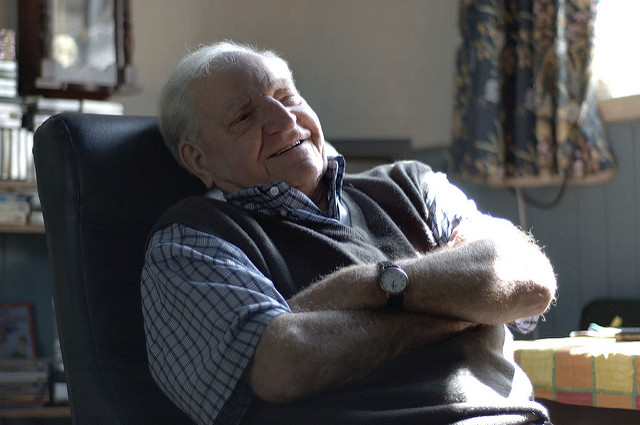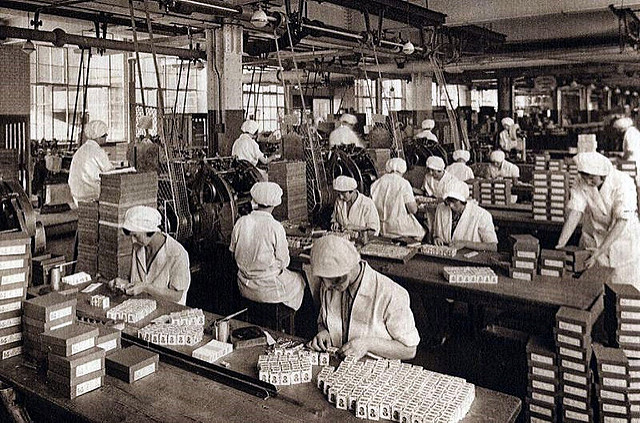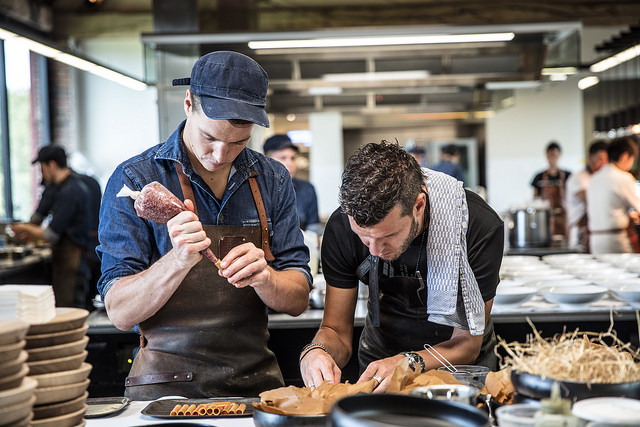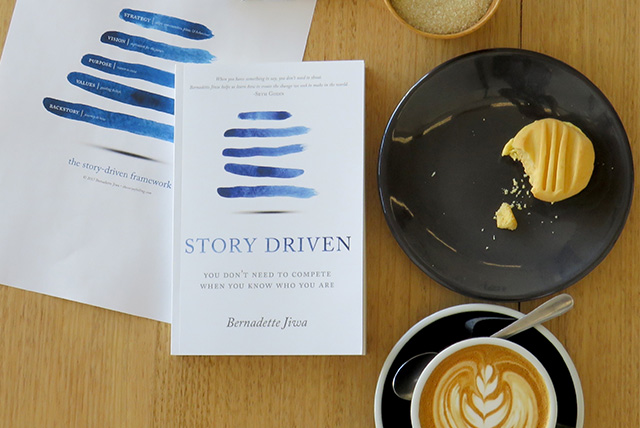Search Results: one of the few
Culture Creation
filed in Strategy
 Our usual Friday morning workout instructor is on holiday for a month. The first sign that something has changed in his absence is a drop in the number of people who attend. The time slot is the same. The workout is identical. But fewer people are motivated to come.
Our usual Friday morning workout instructor is on holiday for a month. The first sign that something has changed in his absence is a drop in the number of people who attend. The time slot is the same. The workout is identical. But fewer people are motivated to come.
We’re not just getting up early on Friday to build muscles or get fitter—we’re there for the feeling we get from working out together. The leader sets the tone. In the beginning, he is responsible for the energy in the room. The way he shows up changes how we respond and what happens next.
How we go about our work can have as much impact on our results as the work itself. Our culture is changed not only because of what we do but because of the way we do it. Culture is born when someone shows up authentically as only he or she can, leaving his or her mark on the work and encouraging other people to do the same.
The who and the how have the power to define the what.
Image by Eli Christman
Marketing Efficacy And Expectations
 When ‘meal replacement’ shakes first came to market they seemed like the answer to a dieter’s prayers. Replacing one or two regular meals with a calorie counted milkshake meant ingesting fewer calories, resulting in rapid weight loss. Meal replacements worked for some people for a little while. Those first few pounds often ‘fell off’. But monotony soon overcame motivation. Dieters gained weight as soon as they went back to eating real food.
When ‘meal replacement’ shakes first came to market they seemed like the answer to a dieter’s prayers. Replacing one or two regular meals with a calorie counted milkshake meant ingesting fewer calories, resulting in rapid weight loss. Meal replacements worked for some people for a little while. Those first few pounds often ‘fell off’. But monotony soon overcame motivation. Dieters gained weight as soon as they went back to eating real food.
The efficacy of the product failed to meet expectations. It’s not that the product didn’t work.
It’s just that it didn’t do everything the customer hoped it would do.
We have a similar problem when it comes to marketing. We sometimes expect our marketing messages to do too much heavy lifting and are disappointed with the results. It’s almost impossible for a marketing message to take a customer from awareness to action in a single leap. And yet, becoming the outlier is the holy grail of marketing. We dream of being the bestseller, the blockbuster, the breakthrough. Mostly we’re disappointed by our results.
Often the problem isn’t the efficacy of our marketing—it’s our expectations about the kind of change it’s possible to create, with the resources we have, in the time we’ve allowed. Two questions worth asking at the outset then—what are we asking this marketing message to do and is it reasonable to expect the result we want in the time we have?
Image by Paul Kelly
Making A Mark
filed in Storytelling
 Regular customers know when Effie has the day off from her job at the city centre convenience store. They sense her absence as soon as they walk in. The coffee machine hasn’t been cleaned. The shelves haven’t been restocked. The music isn’t playing. Customers aren’t stopping to chat.
Regular customers know when Effie has the day off from her job at the city centre convenience store. They sense her absence as soon as they walk in. The coffee machine hasn’t been cleaned. The shelves haven’t been restocked. The music isn’t playing. Customers aren’t stopping to chat.
There’s a different energy about the place.
Over time, we’ve come to believe that making a mark is about doing the monumental—things few people could do. We’ve got that backwards. We change the world in imperceptible increments, by caring to do the things that anyone could do—but few choose to do.
Image by Can Pac Swire
Better Bridges
filed in Marketing, Storytelling
 The design and layout of a department store are deliberate. The sum of a thousand decisions, choices made to optimise the customer experience and maximise profit. Cosmetics on the ground floor, furniture on the top. The fewer people shopping for big-ticket items invest time ascending six floors. You could argue that the customers who go to the trouble of reaching the top of the store are the most motivated customers in it.
The design and layout of a department store are deliberate. The sum of a thousand decisions, choices made to optimise the customer experience and maximise profit. Cosmetics on the ground floor, furniture on the top. The fewer people shopping for big-ticket items invest time ascending six floors. You could argue that the customers who go to the trouble of reaching the top of the store are the most motivated customers in it.
And yet often the sales conversation that happens when the customer gets there seems haphazard and unplanned. Despite the marketing jargon about sleep systems and orthopaedic grade mattresses, one bed looks like any other. The salesperson’s script is the bridge between confusion and clarity, indecision and conviction, an enquiry and a sale. The questions she asks and story she tells are also a set of choices that should help the customer to get to where he wants to go.
Our job as marketers, teachers and leaders is to build better bridges to enable the right change to happen. We can choose to do it on purpose.
Image by Jo Zimney
What’s Your Customer’s Context?
filed in Marketing, Storytelling
 Yesterday I got chatting to Sarah in the street about the sofa she didn’t buy. Sarah, who has three daughters under the age of seven had been looking for the perfect sofa for ages. When she finally found the perfect one she put down a deposit on it and waited for it to arrive a few weeks later.
Yesterday I got chatting to Sarah in the street about the sofa she didn’t buy. Sarah, who has three daughters under the age of seven had been looking for the perfect sofa for ages. When she finally found the perfect one she put down a deposit on it and waited for it to arrive a few weeks later.
This sofa was $8,000.
The following morning she began to question her decision. ‘What on earth am I doing? I must be crazy to spend this kind of money on a sofa, especially when I have three small children.’ Sarah decided to cancel her order and keep looking. Which is why she was leaning on her gate telling me the story yesterday about the sofa she did buy. The sofa that was $2,200, with linen covers that can all be removed and chucked in the washing machine. The sofa that’s perfect for now.
We get caught up in the story we want our customers to believe. We obsess about finding the perfect words to express the value we create—often forgetting to consider the story the customer tells about what’s right for her.
What’s the story your customer is telling herself?
Image by Donnie Ray Jones
A Question Of Pride
filed in Success
 Like most of their friends and neighbours from big Irish-Catholic families, my grandparents didn’t have the luxury of an education. They were not bookish, in fact, they were barely literate. They couldn’t teach me much about history or science. But they taught me a lot about pride.
Like most of their friends and neighbours from big Irish-Catholic families, my grandparents didn’t have the luxury of an education. They were not bookish, in fact, they were barely literate. They couldn’t teach me much about history or science. But they taught me a lot about pride.
My grandparents may not have had status, but they did have a place in their community. They valued fairness and doing the right thing by their neighbours. Their door was always open—kettle always on. They shared the little they had. They worked through their problems, knowing they didn’t have the all the right answers. They were not afraid of failure or a hard day’s work. They proudly sent their children to school in clean clothes with full bellies. And while their aspirations might seem small by today’s standards, they were huge by theirs—at a time when people lived from hand-to-mouth. Week-to-week. Brown envelope to brown envelope. I think my grandparents, and yours too could teach us a lot about how to live and work today.
Our grandparents would probably tell us to stop deferring to others (and Google) to find the answer and to start reflecting on what was right by, and for us? They would ask us why we’d stopped making fewer decisions that spoke to our heart. They would question our belief that success could be plotted on a graph with a neverending upward trajectory. They would wonder when it became fashionable to think that pride was just a vice that would surely come before a fall.
Growing up, I was lucky to be surrounded by people whose metric of success was doing what they were proud to have done. I can’t think of a better way for us to measure what matters.
Image by Alastair Green
The World Inside Your Customer’s Heart
filed in Marketing, Storytelling
 There are few better lessons in the art of storytelling than those learned by watching a great real estate agent auction a good property, on a chilly Melbourne morning. Last Saturday, I looked on as an agent sold a million dollar home by reminding potential buyers how they would feel every weekend as they strolled to the cafe on the corner to have a delicious pastry with their flat white.
There are few better lessons in the art of storytelling than those learned by watching a great real estate agent auction a good property, on a chilly Melbourne morning. Last Saturday, I looked on as an agent sold a million dollar home by reminding potential buyers how they would feel every weekend as they strolled to the cafe on the corner to have a delicious pastry with their flat white.
Having gone through the legal formalities, he didn’t waste much time talking about the quality of the construction or the fixtures and fittings. Instead, he painted a picture of what it would be like to live in that home, in that location. He reflected the story already in the buyers’ hearts back to them.
The young couple who bought the home (with the help of their parents, who stood by their side), had grown up in the area. They wanted their baby son to grow up there too.
Contrast this first agent’s approach with that of the one whose client’s property was passed in at auction later that day. The second agent led with the facts. He gave details about the land size, the distance from the city and statistics on property values in the area. Information that without meaning or context made little emotional connection with potential buyers and their worldview.
It’s believed that marketing is an unethical attempt to motivate people to buy through the back door of their emotions. Of course, storytelling in the wrong hands is a powerful tool that can encourage people to make decisions they later regret. Our job as ethical marketers is to help people to do things they want to do today and won’t regret tomorrow. We can only do that by understanding what’s in their hearts and by being able to say hand on our hearts that this is what we did.
Image by North Charleston
Profit And…
 My mother started working over sixty years ago. As the tenth child of a widow, with nothing more than a basic education she had very few choices. She could be a seamstress or a replaceable cog on the assembly line at one of any number of factories. Sadly the factory jobs won because those jobs were easier to get and didn’t involve apprenticing at a reduced wage. At the age of fourteen, she spent eight hours a day dipping toffees into icing at a sweet factory. She later graduated to standing guard over huge fryers of potato crisps. She and her friends lived for Friday’s brown paper envelope—the contents of which bought a little joy at the weekend.
My mother started working over sixty years ago. As the tenth child of a widow, with nothing more than a basic education she had very few choices. She could be a seamstress or a replaceable cog on the assembly line at one of any number of factories. Sadly the factory jobs won because those jobs were easier to get and didn’t involve apprenticing at a reduced wage. At the age of fourteen, she spent eight hours a day dipping toffees into icing at a sweet factory. She later graduated to standing guard over huge fryers of potato crisps. She and her friends lived for Friday’s brown paper envelope—the contents of which bought a little joy at the weekend.
A career needs to sustain us, and a business needs to make a profit to be sustainable. It could be argued that in recent times we’ve built our economies on the premise that profiting is the only function of business. But the businesses that are thriving have found a way to be about more than just a means to that end. Companies like Airbnb, Patagonia or Small Giants that put contribution and community at the centre of their business model and philosophy. Yes, your business needs to turn a profit, but that doesn’t have to be the only thing your company is committed to making.
My mother didn’t have a choice about how she could contribute. She didn’t have the privilege of thinking beyond earnings. We do. We have never had more power to take ownership of the present or to shape the future than we do today. We can start by figuring out what we intend to make besides money.
Image by Paul Townsend
The Difference Between Good And Great
 The tiny Italian restaurant in Carlton is in full swing. It’s 6 pm, and a couple of experienced chefs are cranking out meals. The kitchen is a well-oiled machine, the oven is at capacity, as diners and Uber Eats drivers converge at once. The food is good. It’s just not great—unlike the food served at the Italian place we recently discovered in Auckland.
The tiny Italian restaurant in Carlton is in full swing. It’s 6 pm, and a couple of experienced chefs are cranking out meals. The kitchen is a well-oiled machine, the oven is at capacity, as diners and Uber Eats drivers converge at once. The food is good. It’s just not great—unlike the food served at the Italian place we recently discovered in Auckland.
On the face of it, there’s little to differentiate the chefs in the two restaurants. Both teams work mostly silently and efficiently. They are well prepared, and everyone understands the role they play in making sure diners leave sated and satisfied. But there’s one thing the chefs in Auckland do that makes all the difference. In Carlton, nothing is tasted before it’s plated. In Auckland, the chefs taste everything without exception before they plate it. They are making a hundred micro-decisions about how to delight their customers every few minutes and adjusting as they go. That single act means they have to put themselves in the diner’s seat for a second. They have to imagine what it will feel like to experience their product. And that makes all the difference.
Good becomes great when we put the customer at the centre of everything we do.
Image by visitflanders
Create The Future You Want To See

The best investment I ever made in myself and my business was buying a copy of Seth Godin’s book, Purple Cow. Seth taught me that remarkability was a choice. Just as business owners don’t work just to pay the bills, writers don’t write just so they can eat. They write to create the change they want to see in the world. That’s what we’re all here to do.
My new book, Story Driven: You don’t need to compete when you know who you are, published a few days ago. It’s my most important work. That’s why I’m launching the Kindle eBook edition at the special price of 99 cents this week. I’m not only inviting you to invest in yourself by buying a copy. I’m encouraging you to invest in your friends and colleagues by gifting the book to them.
You can buy and gift Story Driven today on Amazon.com, or if you’re in Australia, Amazon.com.au and the UK, Amazon.co.uk
(It’s available in all international Amazon stores. Search your local Amazon store by title and author).
We get to choose the future we want to see and the chance to create it together.
Thanks for giving me a reason to write.
Image by Kieran Jiwa